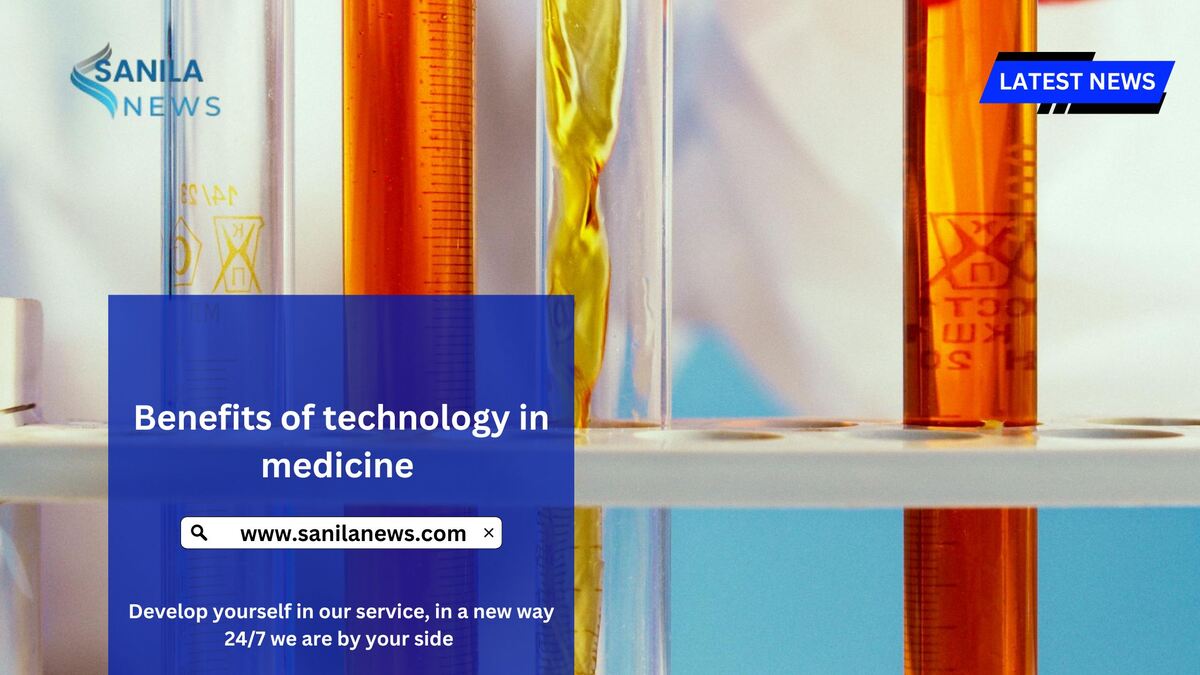The Benefits of Technology in Medicine
Technology has revolutionized virtually every industry, and medicine is no exception. Benefits of technology in medicine From diagnostics to treatment, the integration of advanced technologies in the healthcare sector has led to groundbreaking changes that enhance patient care, reduce costs, and improve the overall efficiency of medical systems. This essay explores the multifaceted benefits of technology in medicine, focusing on how it impacts patient outcomes, healthcare delivery, and medical research.
1.Benefits of technology in medicine, Improved Diagnostic Capabilities
One of the most profound impacts of technology in medicine is its role in improving diagnostic accuracy and speed. Early detection of diseases often increases the chances of successful treatment, and modern technologies enable clinicians to identify health issues at a much earlier stage.
1.1 Medical Imaging
Medical imaging technologies, such as Magnetic Resonance Imaging (MRI), Computed Tomography (CT) scans, and Ultrasound, have become critical tools for diagnosing a range of conditions. These imaging techniques allow healthcare professionals to visualize the internal structures of the body with unprecedented clarity, making it easier to identify abnormalities, tumors, and fractures.
Moreover, innovations like 3D imaging and functional MRIs (fMRIs) go beyond simple visualization, allowing specialists to map brain activity, track blood flow, and even study real-time organ function. These advancements are essential in diagnosing conditions such as strokes, aneurysms, and neurological disorders.
1.2 Benefits of technology in medicine, Artificial Intelligence (AI) in Diagnostics
AI and machine learning have introduced new paradigms in diagnostics. Algorithms can now analyze medical images more quickly and sometimes more accurately than human radiologists. For example, AI systems are being trained to detect early signs of cancers, such as breast and lung cancer, from radiographic images with high precision.
AI has also been integrated into electronic health record (EHR) systems, enabling predictive analytics. By studying patterns in patient data, AI systems can identify patients at risk of certain diseases and flag early warning signs, facilitating preventive care measures. For example, diabetes and cardiovascular diseases are areas where predictive models have shown great promise in forecasting risk based on lifestyle and genetic factors.
- Enhanced Treatment Options
Technological advancements have led to more effective, personalized treatment options for patients, transforming how many diseases and conditions are managed.
2.1 Minimally Invasive Surgery
Robotic-assisted surgery is a significant leap in the field of surgery, offering a minimally invasive alternative to traditional open surgeries. Systems like the da Vinci surgical robot allow surgeons to perform complex procedures with enhanced precision and control, using small incisions. The benefits of such surgeries include reduced recovery time, less pain, lower risk of infection, and minimal scarring. For patients, this means quicker returns to their daily lives and, often, improved surgical outcomes.
2.2 Personalized Medicine
Personalized medicine, also known as precision medicine, leverages genetic information and biomarkers to tailor treatment plans to the individual patient. Genomic sequencing has become more affordable and accessible, enabling physicians to analyze patients’ DNA to identify the most effective treatment based on their genetic profile.
For instance, cancer treatments have shifted towards targeted therapies that attack specific genetic mutations driving tumor growth. This personalized approach reduces the trial-and-error aspect of treatments and minimizes adverse side effects, ultimately improving patient outcomes.
2.3 Telemedicine and Remote Treatment
The rise of telemedicine has transformed how healthcare is delivered, particularly in rural or underserved areas. Through video consultations, doctors can assess patients remotely, diagnose conditions, and prescribe medications without the need for an in-person visit. Telemedicine became particularly vital during the COVID-19 pandemic, where it enabled healthcare systems to continue serving patients while minimizing the risk of virus transmission.
Additionally, telemedicine provides a convenient solution for patients with mobility issues, those living far from healthcare facilities, or individuals needing frequent follow-ups. The use of mobile health applications, wearable devices, and remote monitoring tools further supports chronic disease management by tracking vital signs and sending real-time data to healthcare providers.
- Improved Patient Care and Safety
Another major benefit of technology in medicine is its role in enhancing patient care and safety.
3.1 Benefits of technology in medicine; Electronic Health Records (EHRs)
EHRs have replaced traditional paper-based systems, streamlining the management of patient information. They allow healthcare providers to quickly access comprehensive patient histories, reducing the risk of errors and ensuring continuity of care across different medical institutions.
Moreover, EHRs support clinical decision-making by providing physicians with tools to check for drug interactions, allergies, and past treatment responses. Automated reminders for vaccinations, screenings, and follow-up appointments also ensure patients receive timely care. The ability to share patient records across healthcare networks promotes a more integrated and coordinated approach to patient management, particularly in complex cases involving multiple specialists.
3.2 Medication Management and Robotics
Technological advances have also improved medication management. Automated dispensing systems in hospitals reduce human error, ensuring patients receive the correct dosage and medication. Some hospitals even utilize robotic systems that prepare and deliver medications, further minimizing the risk of contamination or mistakes.
Wearable drug delivery systems, like insulin pumps for diabetic patients, ensure that medications are administered at the right time and in the appropriate amounts. Such systems can significantly enhance a patient’s quality of life, enabling more freedom while managing chronic conditions effectively.
- Boosted Medical Research and Innovation
Technology has not only improved day-to-day clinical practices but also significantly accelerated medical research and innovation.
4.1 Genomics and Bioinformatics
The human genome project and advances in genomics have opened new frontiers in understanding the genetic foundations of diseases. Researchers can now study complex interactions between genes and environmental factors that contribute to conditions such as cancer, heart disease, and Alzheimer’s.
Bioinformatics tools and platforms that analyze large datasets help researchers discover new treatment pathways and identify targets for drug development. This field has enabled breakthroughs in personalized medicine, where treatments are specifically designed based on an individual’s genetic make-up.
4.2 3D Printing and Biotechnology
3D printing technology has made a remarkable impact in the fields of prosthetics, surgery, and bioprinting. Surgeons can now use 3D printing to create patient-specific models of organs and structures to plan complex surgeries more effectively. Custom-designed prosthetic limbs can be produced quickly and at a fraction of the cost of traditional methods, improving accessibility to life-changing devices.
Bioprinting, an emerging field, aims to print biological tissues, with the long-term goal of producing functional human organs. While still in experimental stages, bioprinting could address the shortage of organ donations and reduce transplant rejection rates by creating organs from a patient’s own cells.
5. Cost Reduction and Healthcare Efficiency
While technology in medicine often requires significant upfront investment, the long-term benefits include cost savings and increased efficiency in healthcare delivery.
5.1 Automation and AI in Administrative Tasks
Administrative inefficiencies have long been a burden on healthcare systems. However, automation and AI are reducing the time spent on tasks such as billing, scheduling, and resource allocation. AI-driven chatbots, for example, can handle routine patient inquiries, freeing up staff to focus on more critical tasks. Predictive analytics in hospital management can optimize resource use by forecasting patient admission rates, reducing the chances of over- or under-staffing.
5.2 Remote Monitoring and Chronic Disease Management
Remote monitoring technologies allow for continuous observation of patients, particularly those with chronic conditions like diabetes, hypertension, and heart disease. Wearable devices can track important health metrics such as blood pressure, glucose levels, and heart rate, sending data to healthcare providers who can intervene before conditions worsen. By catching potential issues early, these technologies reduce hospital admissions and emergency room visits, leading to significant cost savings for both healthcare providers and patients.
6. Education and Training for Healthcare Professionals
Technology is also enhancing the education and training of healthcare professionals. Simulation technologies, including virtual reality (VR) and augmented reality (AR), are transforming medical education by providing interactive, realistic scenarios for students and professionals to practice without risk to patients.
6.1 Benefits of technology in medicine: Virtual Reality in Medical Training
VR allows medical students to engage in lifelike simulations of surgeries and emergency care. These immersive environments provide hands-on experience in a safe, controlled setting, helping students build confidence and skills before entering real-world practice. Experienced surgeons can also use VR to rehearse complex procedures, improving their precision and outcomes in the operating room.
6.2 Online Learning Platforms and Tele-Education
The rise of online learning platforms has democratized access to medical education. Remote learning tools, webinars, and digital courses allow healthcare professionals to stay updated with the latest developments in their field, even in resource-constrained areas. Tele-education programs also enable the sharing of medical knowledge across borders, fostering collaboration and innovation in global healthcare.
Conclusion
The integration of technology into medicine has fundamentally transformed the way healthcare is delivered and experienced. From improving diagnostic accuracy and offering personalized treatment options to enhancing patient care, technology continues to push the boundaries of what is possible in medicine. Moreover, it enables more efficient healthcare systems, reduces costs, and promotes medical research and innovation.
As technology advances further, we can anticipate even more groundbreaking changes in the healthcare sector, including the development of artificial organs, more sophisticated AI diagnostics, and potentially even cures for some of today’s most challenging diseases. In this evolving landscape, technology will continue to be a powerful tool for improving patient outcomes and shaping the future of medicine.
Last word
Keep an eye on our news channel Sanila News to get updated news regularly.

